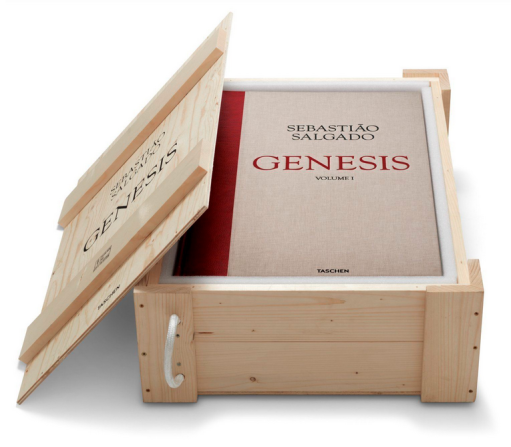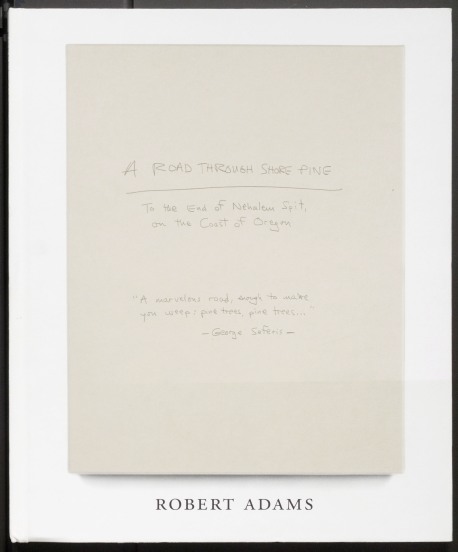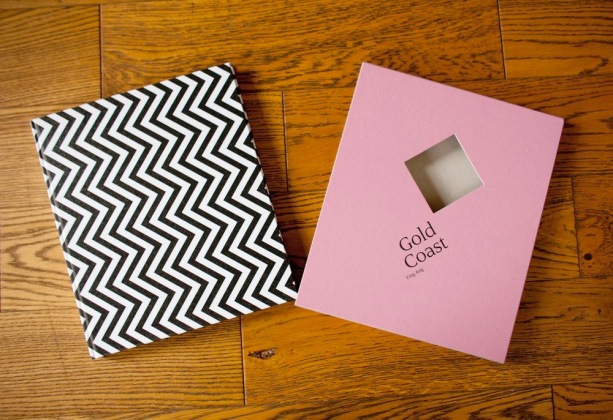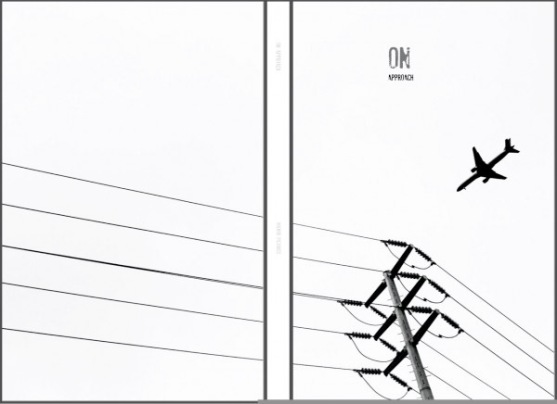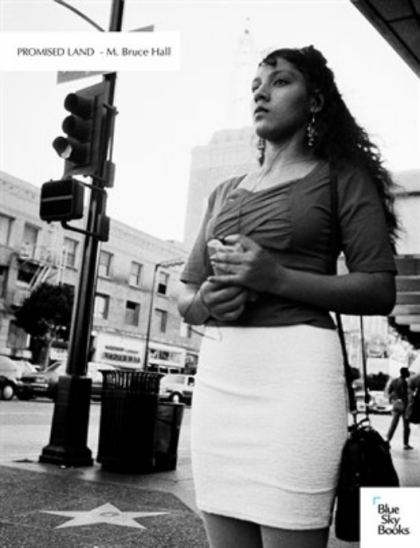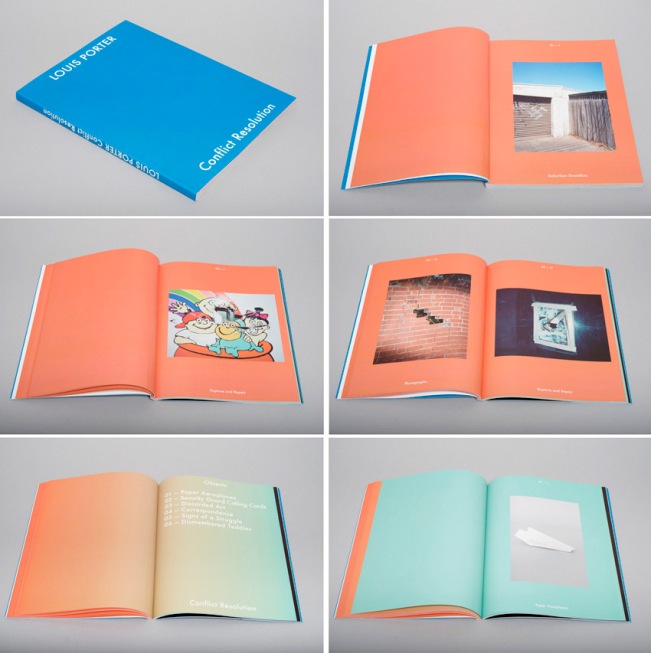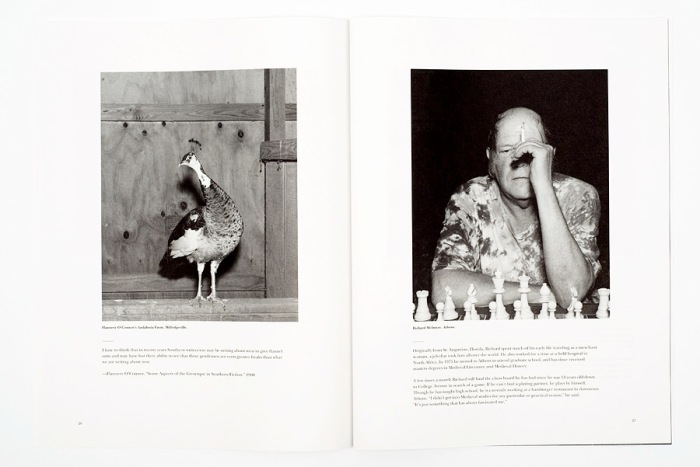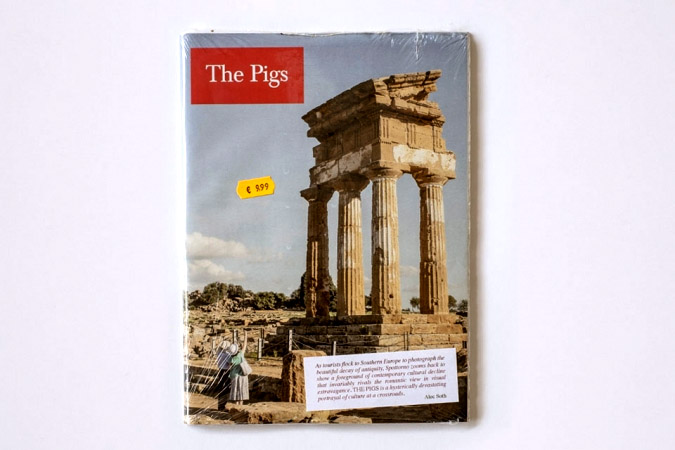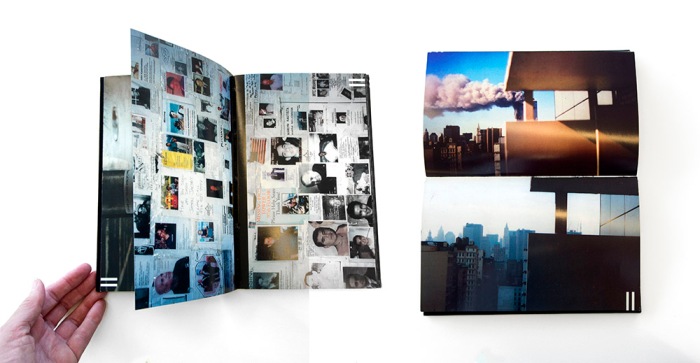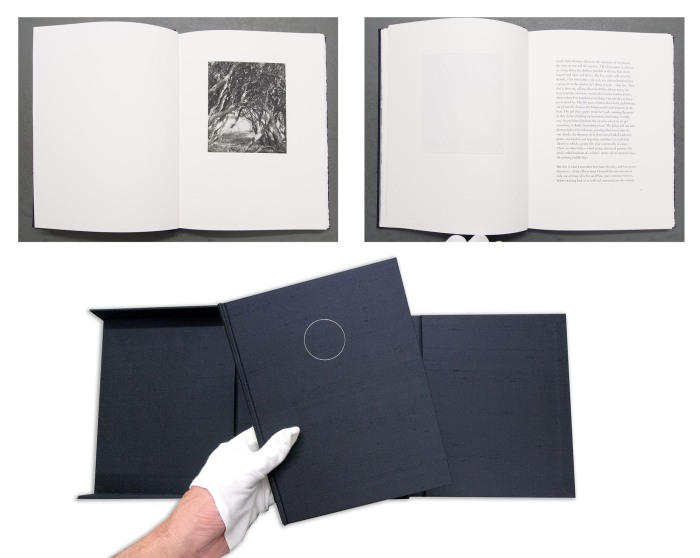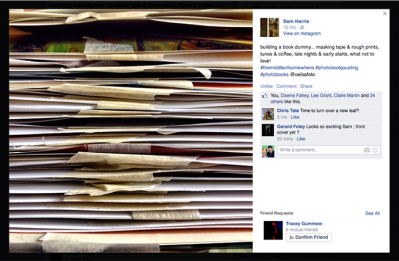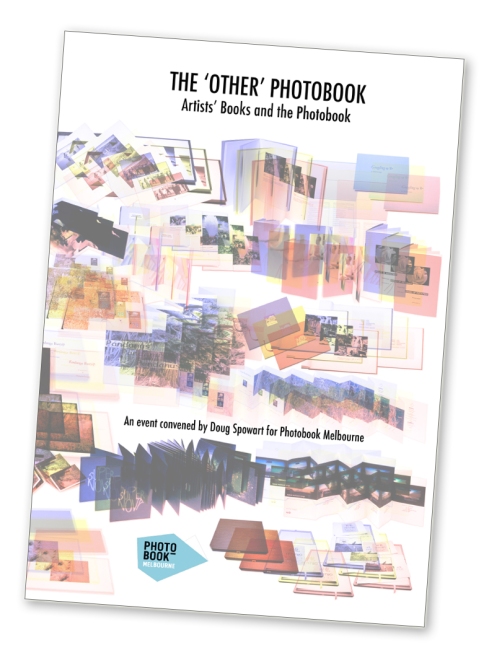Posts Tagged ‘Photobooks’
ARTISTS BOOKS+AUSTRALIA: Comment for CODEX Journal
.
Early in 2019 Vicky and I received an email from Monica Oppen and Caren Florance inviting our contribution to a report commenting on news and updates on book arts activity in the Antipodes that they were preparing for the Codex Foundation‘s new journal The Codex Papers. They mentioned that they were asking for those involved with projects, conferences, workshops, collections and awards to send through their comments and plans so the local scene could be collated into the report.
Monica and Caren added that, Your commitment to the photo books and also to documenting events for the past years (or is it decades now?!) has lead us to decide that we must ask you what you see as the trends and key events of the past couple of years. Any feedback (your personal view) on the state of the book arts in Australia at the moment would also be of interest.
We were particularly excited to have been invited to contribute and over the days following the request we collaborated on a document that outlined our view of the scene. Photo documents that we had made were reviewed and prepared and forwarded, along with our text to Monica and Caren. The task of collating and blending the individual responses into a single report was completed and forwarded to the Codex Foundation.
Early this year the report was published and we received a contributor’s copy. We were impressed with the journal and the many interesting commentaries on the book arts from around the world. It was interesting to see the complete report and to read the individual contributor’s comments.
Published below is our text and some of the photographs we contributed in response to Monica and Caren’s invitation.
.
Notes on the Antipodean book arts in the Antipodes for Caren + Monica
.
In the 1990’s and early 2000’s, the world of the artists’ book in Australia was an exciting place. In Brisbane Noreen Grahame, through her Grahame Gallery, Numero Uno Publications, Editions and the Centre of the Artists’ Book championed the Australian artists’ book discipline. Grahame efforts were directed towards artists’ book exhibitions which started in 1991, art book fairs the first of which was held in 1994 and special invitation themed artists’ book exhibitions featuring clique of prominent national book makers.
Artspace Mackay under the directorship of Robert Heather hosted the first of 5 Focus on Artists’ Book (FOAB) Conferences in 2004. Over the years FOAB brought to Australia some of the world’s noteworthy practitioners and commentators on the discipline including Marshall Weber, Keith A Smith and Scott McCarney and juxtaposed them with local key practitioners. For the next 6 years those interested in artists’ books gathered to participate in lectures, workshops, fairs and a solid community of practice developed. In 2006 Artspace Mackay added the Libris Awards: The Australian Artists’ Book Prize that, with a few breaks, continues to be the premier curated artists’ book exhibition and award in Australia.
Queensland also had 10 years of artists’ book exhibitions and 5 years of conferences from 1999-2008 at Noosa Regional Art Gallery. In many ways Queensland was the place to be if you were into artists’ books.
In this period a few other artists’ book awards took place including the Southern Cross University’s Acquisitive Artists’ Book Award from 2005-2011.
Throughout the 1990s and until fairly recent times State Libraries and the National Library of Australia actively collected and built significant artists’ book collections. These included many forms of the artists’ book including: private press publications, significant book works by recognised international and Australian practitioners, books as object/sculpture, zines and the emergent photobook.
Now around the country major libraries are feeling the push by managers to move access to the library’s resources online thus the importance of the physical object and the tactile connection with items such as artists’ books is now not considered part of the service that the institution needs to provide. For example, the State Library of Queensland’s Australian Library of Art, which houses one of the largest artists’ book collections in the country, is now without a dedicated librarian. Research fellowships and seminars that were once administered by the Library and supported the Siganto Foundation are no longer available. Information and advice about the collection and other exhibitions or group viewings of artists’ books from their extensive collection have been significantly affected.
In recent years two Artists Book Brisbane Events coordinated by Dr Tim Mosely at Griffith University has facilitated a significant connection between the American and European scenes with guest speakers like Brad Freeman (Columbia University – Journal of Artists Books), Sarah Bodman (Centre for Fine Print Research – The University of the West of England), Ulrike Stoltz and Uta Schneider (USUS). The conferences also have included a place for discussion and review of the discipline by academics and emergent artist practitioners from Masters and Doctoral programs. These two ABBE conferences have provided a platform for academic discourse.
The artists’ book medium has been principally the realm of the printmaker as their artform easily enabled the production of printed multiples. Digital technologies, new double-sided inkjet papers as well as print-on-demand technologies have enabled the emergence of a range of new self-publishers – particularly photographers.
In 2011 I completed my PhD the title of which was Self-publishing in the digital age: the hybrid photobook. From my experiences in the artists’ book field as a practitioner and commentator and my lifelong activities in photography I saw a future for the photobook which could be informed by the freedoms and the possibilities for the presentation of narratives. While some aspects of this prophecy have been the case with some photographers, particularly those involved in academic study, the main thrust for the contemporary photobook has been towards the collaboration with graphic designers. These books take on various design and structure enhancements including special bindings, foldouts, mixed papers, page sizes, inclusions and loose components that can, at times, dilute the potential power of the simple photographic narrative sequence. The contemporary photobook has developed into its own discipline and through the universal communication possibilities of social media, conferences and awards a new tribe has emerged quite separate from and unaffected by the artists’ book community.
Over the last 5 years the National Gallery of Victoria has presented the Melbourne Art Book Fair. In keeping with the art book fair worldwide movement participants man tables selling their publications. These can range from Institutional/gallery catalogues, trade art publications and monographs, artists’ books, photobooks and zines. The umbrella-like term and the spectacle of the ‘Art Book Fair’ as an event to witness and participate in has captured the individual disciplines and united the various tribes into one, not so homogeneous – community.
A quick review of the 2019 Melbourne Art Book Fair’s 86 table-holders there were only a handful of artists’ book-makers, perhaps a similar number of photobook publishers and a large contingent of zinesters and self-published magazines. The bulk of the tables were held by book distributors, bookshops, arts organisations, educational institutions and art galleries. The discipline of artists’ books was not significantly represented in this space. Was that due to the National Gallery of Victoria’s selection of table-holders or was it to do with artists’ book practitioners not considering the event as a relevant opportunity to show and sell their works?
Ultimately the question is – what is the status of the artists’ book in Australia at this time? My impression is that one of artists’ books key strengths was its closeness to the printmaking discipline and the cohesive bond of makers, critics and commentators, educators, journals, collectors and patrons. As many of these are connected to the tertiary academic environment and collecting libraries, both of which are fighting for their relevance in a changing education and library world, could it be considered that this is a defining moment in the history and the future of the artists’ book in this country?
Doug Spowart co-written with Victoria Cooper
.
.
.
.
All photographs ©Doug Spowart
A Spectrum: Photobook to Artists’ Book
About 4 years ago during post doctoral research I was involved with at the State Library of Queensland as a Siganto Foundation Research Fellow. I submitted a paper concept to a call-out for contributions to a major book on photobooks being prepared by a significant contributor to the international photobook discipline at that time. Unfortunately the publishing project was never realised and the essay did not enter the critical discourse on photobooks.
Recently there has been much discussion about terminologies in photobooks and some aspects of the artists’ book are beginning to blur. I passed the paper on to a UK PhD candidate who found interest in the discussion that I raised and suggested that I self-publish the essay.
So here it is…
.
. A Photo Spectrum: Photobook to Artists’ Book
.. [DRAFT@January 21, 2015]
The contemporary popularization of the ‘photobook’ is arguably attributed to the three published commentaries that have become seminal texts on the subject, the first of which: The Photobook: A History Volume I was released in 2004 by photographer and photobook maker Martin Parr, and photo historian Gerry Badger. Commentator and photographer Tim McLaughlin observes: ‘The term “photobook” which never really existed before Parr and Badger (most dictionaries still do not recognize it), would, within a few years, come to identify a growing industry…’(McLaughlin 2013). Interest in the photobook has never been greater. Digital technologies have emancipated photography and book publishing and now anyone can take photos and make their own photobooks. Accompanying this publishing revolution are awards, ‘books of the year’ lists, catalogues, and an auction market. Specialist online and bricks-and-mortar bookshops now service an ever-increasing buying and collector market.
Although photobook publications have aesthetic definitions for what a photobook is, the term has a lot of ground to cover. Photography writer and teacher David Campany recently noted in Aperture’s Photobook Review that: ‘The compound noun ‘photobook’ is a nifty little invention, designed to turn an infinite field (books with photographs in them) into something much more definable’(Campany 2014). But while the ‘infinite field’ may be ‘easily defined’ the term photobook can only serve as a generalised umbrella for the plethora of photobook products that shelter under it.
The definition of photobook today could include a roughly printed or photocopied zine-like object created by a child, to a blatantly over-designed limited edition book. In between these bookends lies a range of products: Print-on-demand and hand-made unique state, small editions, self-published or bespoke books, ephemeral items, newspapers, pamphlets and zines. Although many of these published forms may not have the universal distribution and commercial opportunities afforded a trade published book, they are, none the less, part of the broad practice of the contemporary photobook. Additionally many of these books occupy much of the emergent contemporary scene and tend to be overlooked as the critical discussion is usually focussed on the photobook exemplars from the past.
The boundaries of the photobook discipline are blurred by their intersection with a variety of other book genres including the expansive mediums of artists’ books and zines. As independent publishers of books, artists have for over 100 years communicated their ideas and stories using their chosen media in book form. Artists have embraced photography and the various forms of photography from found collaged photos, to screen-printing, photo etching and gravure, as well as actual silver gelatin, type C, inkjet or laser prints in their artists’ book works. Anne Thurmann-Jayes commented in the catalogue for ars photographica, an exhibition about artists and photographers and their photobooks, that: ‘In very general terms, it is possible to say that half of all artists’ books produced to date have been based on photographs’ (Thurmann-Jajes 2002:19). For that reason any discussion of the photobook needs to consider a broader range of contributors to the discipline as well as other forms of the book where photographs act as carrier of the visual communiqué.
In her essay Thurmann-Jajes also comments on the differences that she felt existed between the artist and the photographer in conceptual aspects of making a photobook. She states that:
The authors of photo books followed photographic tradition, according to which the photograph as such was decisive, becoming the bearer of meaning… By contrast to the photo book, the artists’ book is not the bearer, but the medium of the artistic message. (Thurmann-Jajes 2002:20)
In highlighting the differences in the way the photograph is used and considered by these two groups, Thurman-Jajes has identified a division may have always existed between the photographer and the artist using photography. Yet making books with the photograph as a ‘bearer of meaning’ or ‘message’ should not belong to any particular practitioner. If the photograph is therefore a universal and an open medium for all book makers then any questioning on what is and what can be a photobook requires consideration that embraces this diversity.
To ensure that the photobook remains vibrant and relevant, a flexible space for discourse and critique needs to be created that is inclusive of the broad range of authors and book forms in this medium. In 1998 artists’ book librarian, collector and curator Clive Phillpot suggested a metaphor for the artists’ book discipline as being ‘white light’ and the individual colors that made up white light as being the ‘many categories of the spectrum’ representing the broad nature of the practice. In this essay Phillpot’s ‘white light’ metaphor is now applied to the range of published forms that employ or contain photographs beyond that of the artists’ book. (Phillpot 1998:38)
Through an extension of Phillpot’s prism, this essay will propose a grouping of the various forms of the book from photobook through zines to artists’ books and their salient characteristics using individual colors (wavelengths of light). As the visible light spectrum has a rainbow of seven visible colors this proposition has seven as well. Although two additional ‘colors’, familiar to photographers, that of infrared and ultra-violet, have been added to recognise specific aspects of photography publishing at the extreme ends of the range. Each color and book form has specific characteristics and identifiers associated with it – it is recognized that many books may challenge attempts to place them within just one color in this spectrum.
The transition from the infrared to ultra-violet intentionally locates those books conceived and produced by photographers at the warmer end of the spectrum. Book forms in the cooler end of the spectrum would be principally books made by artists using photography. Placement within this spectral framework may create some interesting challenges including the divisions of ‘artist’ and ‘photographer’, and how practitioners describe themselves and their creative products.
The 9 colors and their identifiers are:
Infrared – The Deluxe Photobook
- A book of monumental proportions approaching what bibliographers and librarians call ‘double elephant’ (up to 78cm tall for Helmut Newton’s Sumo);
- Usually consists of a monograph styled ‘best of’, or, of a tightly thematic subject matter by a particular photographer;
- Are limited editions, expensive to buy and have limited markets that center on private collectors and institutions; and
- Are usually commissioned by a small number of specialist art publishing houses as opulent objects of art, design and packaging.
An exemplar:
Genesis
Sebastião Salgado, Taschen, Hardcover, 2 vols, with bookstand, 18.4 x 27.6 in., 704 pages, £ 2,500. https://www.taschen.com/pages/en/catalogue/photography/all/02613/facts.sebastio_salgado_genesis.htm
Viewed: April 6, 2018
Red – The ‘Classic trade’ Photobook
A book form in the tradition of Walker Evans’ American Photographs (1938), William Eggleston Eggleston’s Guide (1976), Robert Frank’s The Americans (1959), and John Gossage’s The Pond (1985). Characteristics of these books may include;
- A single photograph per opening, the facing page blank and may sometimes contain a title or caption;
- Sometimes it is a book co-published with an exhibition of the same title;
- Simulation of the gallery experience of viewing photographs and therefore is sometimes referred to as an ‘exhibition in a book’;
- Images in these books are carefully and purposefully sequenced to carry the narrative intended by the author; and
- An essay relating to the work by the photographer, curator or writer often accompanies this book form – occasionally the essay may be of an obtuse content.
An exemplar:
A Road Through Shore Pine
Photographs by Robert Adams. Fraenkel Gallery, 2014. 42 pp., illustrated throughout, 9¾x11¾”. http://www.photoeye.com/bookstore/citation.cfm?Catalog=DS364
Orange – Design Photobook (collaboration)
The authors of this form consider that photobooks are an experience that can be enhanced by the influence of creative graphic design that may include:
- Usually is a collaboration between the photographer and a designer so as to transform the photographs into a strident work of visual communication;
- The presentation of photographs over double pages, or being montaged, or printed full-bleed as well as being scaled variably;
- Inventive typography and layout design enhancements;
- High quality book production, printing, finishing and packaging; and
- A differentiation from other photobooks by the inventiveness of the design features and the surprise that is encountered by the reader in engaging with the physicality of the book and how it operates as a communicative device.
Exemplars:
Gold Coast, photography by Ying Ang, co-designed with Teun Van Der Heijden
Self-Published, 2014. 132 pp., 72 color illustrations, 9½x11¼”.
http://yingangphoto.com/page.cfm?id=34&subid=121
Iris Garden, photography by William Gedney and designed by Hans Seeger
63 pages plus insert, 6.75 x 9.5 in. Heavy softcover with wraps & slipcase,
Little Brown Mushroom, 2013, in an edition of 1,000.
http://www.littlebrownmushroom.com/products/iris-garden/
Yellow – POD Photobook
- These books are usually self-published;
- They may emulate bookstore trade books from simple booklets to grand coffee table tomes;
- They can be produced by anyone with minimal photography and computer skills and just require access to online photobook-service providers;
- Single book or multiple copies can be made;
- Affordable pricing considering the sophistication of the product;
- POD services generally utilize templates for ease of use by clients of limited skill;
- POD books may have designer input, but due to the limited range of options for special finishing or designed-in features; and
- Many POD book users create book ‘dummies’ that may lead to a more trade-based publication at a later stage.
For exemplars see works offered in the photography category of http://www.Blurb.com.
On Approach by Daniel Milnor, BLURB Book, 13x20cm, 26 pgs
http://www.photoeye.com/bookstore/citation.cfm?Catalog=ze462
http://www.smogranch.com/2012/09/26/cleveland-musuem-of-art-diy-photobooks/
Promised land by M Bruce Hall, Blue Sky Books/MagCloud. Standard 8.25″ x 10.75″. 56 pages, perfect-bound.
http://www.magcloud.com/browse/issue/815317
Green – Emergent – PhotoStream* [of Consciousness], Photozine*or Insta-photobook*, Imagistbooks*
This aspect of photobook publishing is occupied by a large number of DIY practitioners accessing a range of print technologies from desktop inkjet and laser printers to affordable digital press printing and binding technologies. Content of these books could be considered a visual form of imagist or concrete poetry – they exhibit and subject and assembly sensibility that could match ‘stream of consciousness’ approaches to art. Other aspects include:
- Usually self-authored or collaborative publications;
- Are made in limited numbers/editions, often hand sewn or stapled;
- The books are sold through specialist popular culture bookshops or online;
- Often these books may be the result of crowd sourced funding and may be derived from online image storage or social media platforms like Instagram; and
- Their locale of popularity and distribution may be regional.
*Names considered to best describe these emergent forms
Exemplar:
Conflict Resolution by Louis Porter, published by Twenty Shelves (Melbourne/Australia), 164 Pages full color, Design by Pierre Hourquet, Section sewn paperback with de-bossed cover, 20 x 27 cm, Edition of 1000.
http://louisporter.com/twenty-shelves/
Blue – Photopapers* Photomag* (broadsheet / newspaper / magazine)
These emergent photobooks take their physical form and production values from conventional print media. Other aspects include:
- Availability through POD service providers;
- Print runs may be small and limited or quite extensive of 1,000 copies or more;
- These works may parody existing newspaper or magazine titles as a form of activism or commentary on print media and society; and
- They may provide a photographer with a larger-scale publication format at a low production cost.
*Names considered to best describe these emergent forms
Exemplars: Photopaper
LBM Dispatch #7: Georgia photography by Alec Soth and Brad Zellar, designed by Meredith Oberg
Little Brown Mushroom, Publication Date, November, 2014
48 pages 11.25 inches x 15 inches, 50 lb newsprint paper, Edition of 2000
http://www.littlebrownmushroom.com/products/lbm-dispatch-7-georgia/
Exemplar: Photomag
PIGS
Photography by Carlos Spottorno, designed by Carlos Spottorno and Jaime Narváez based on a replica of The Economist magazine.
Published by: RM Verlag and Phree, Madrid, 2013
112 pages 27 x 19 cm
http://spottorno.com/web/pigs
Indigo – Innovative Artists’ Book
This genre of the book is based around the idea of the artist as author, publisher and maker, and forms of the book that represent innovation, creativity and exploration of the book form. Historically this book form has been the domain of the artist and the way photography finds its way into the book can be more about the photo as a record, a fact or a trace representing the world and society that created it. Rather than something representing the passion that photographers have for the photograph as the product of their special visual perception of the world. Characteristics of these books include;
- Forms integral to the narrative expression and the artist will break rules and conventions to achieve their expectations for the book;
- Books engineered in ways that demand interaction, both through the visual senses but also through the haptics of handling and reading – the turning of pages;
- Books that may mix photographs and text or text over photographs, or text as photographs and photographs as text;
- Multi-media productions where the photograph becomes a part of a larger interplay of media; and
- Bespoke unique state or a work that is published as a limited edition.
It should be noted that the artists’ book discipline might encompass an equally diverse range of book forms
Artists’ Book exemplar:
Eleven, Marshall Weber 1960- ; Christopher Wilde; Sara Parkel; Alison E Williams; Isabelle Weber; Booklyn Artists Alliance. New York : Booklyn :c2002
http://www.booklyn.org/artists/Marshall%20Weber.php
Violet – ‘Artists’ Book’ Codex
Related to books that utilize the conventional codex form and may explore the narrative form, conceptual art ideas as well as artmaking techniques. These books may exhibit the following characteristics:
- Codex book form;
- A range of production values including artisan printers and binders;
- Contain texts as well as graphic elements and photographs; and
- Printing techniques such as silkscreen, photoetching and gravure, inkjet, digital press and alternative imaging techniques like cyanotype.
An exemplar:
Google vanitas : autobiography # 7 concept and design by Scott McCarney.
16, [2] p. : col. ill. ; 22 x 20 cm.
http://scottmccarneyvisualbooks.com/Pages/google%20vanitas.html
Ultra-Violet – ‘Book Arts’, Livre d’Artiste Book
Consistent with the production and aesthetic values of the ‘fine press’ with the following characteristics:
- Texts are usually handset letterpress, photographs made by traditional photo etching or gravure techniques and binding and presentation in cloth and leather often with ‘book arts’ embellishments;
- The books are limited editions and utilize artisan practitioners and specialists in the production of the work;
- Often the book may be commissioned by an entrepreneurial publisher following the French tradition of the latter 19th century; and
- These works are expensive to buy and have limited markets that center on private collectors and institutions.
An exemplar:
Extinguishing of stars Carolyn Fraser and Holly Morrison
Idlewild Press, Cleveland, Ohio :2003. 61 p. : ill. ; 24 cm., in case 26 x 20 x 4 cm. Edition of fifty.
https://thedesignfiles.net/2011/03/interview-and-studio-visit-carolyn-fraser-of-idlewind-press/
http://www.carolynfraser.com/wp-content/uploads/2011/11/Issue4_Uppercase_Fraser.pdf
In any attempt to define creative book publishing caution needs to be exercised. The artists’ book discipline has for years been dogged by attempts to define ‘what is, and what isn’t an artists’ book’. In 2005 Johanna Drucker put forward a proposal for classification of artists’ books. Even though she predicted that her proposition would ‘… cause strife, competition, [and] set up a hierarchy, make people feel they are either included or excluded’, (Drucker 2005:3) it inspired worldwide debate and furore from artists and librarians and became known as ‘Druckergate’. Ultimately the angst cooled and the artists’ book field continued with qualified debate, in both academic literature and everyday conversation, thus creating a basis for ongoing questioning and commentary on the discipline.
More recently, in 2010, Sarah Bodman and Tom Sowden from the Centre for Fine Print Research at the University of the West of England sought to define the canon for the artists’ book in the 21st century. They did this by creating a survey of world practitioners of bookmaking by artists in every conceivable outcome, including the emergent eBook. They found that the hierarchical form of a tree diagram was ‘too rigid and too concerned with process’ (Bodman and Sowdon 2010:5). They discovered that their respondents wanted to alter the diagram to satisfy the, ‘cross-pollination that is often required by artists’ and added in, ‘connectors across, up and down to bring seemingly disparate disciplines together.’
Just as Bodman and Sowdon found from their research, this visual spectrum structure is open to challenge where practitioners and commentators are encouraged to mix and augment new color palettes for the presence of the photograph within the book. So what is proposed is not a rigid structure, deeply rooted and immovable as in the tree trunk, branch and leaf, but rather one where books of similar characteristics can be grouped, blended and mixed.
The intention for this nomenclature is to bring visibility to the diversity of creative publishing forms using the photograph. It is offered as a potential tool that recognises this evolving and extended medium to: curators, judges, cataloguers preparing ‘the best books of the year’ lists and books for sale or auction, and commentators engaging in critical debate. Additionally the links with artists’ books and zines can also be acknowledged thus extending and enriching the discipline of the photobook.
In the debate surrounding the evolving photobook this photo-specific spectrum analysis is offered, as a non-hierarchical, flexible and creative nomenclature. The spectrum should be able to move with change and developments within the photo in the book and the ideas and the motivations behind those who create these communicative devices and their commentators and readers. Each constituent of the spectrum, although emanating its own ‘wavelength’ or ‘color’, forms a part of the “white light” that is the continuum of the photograph and its place in the book.
Dr Doug Spowart[1]
January 2015
.
Bodman, S. and T. Sowdon (2010). A Manifesto for the Book: What will be the canon for the artist’s book in the 21st Century? T. S. Sarah Bodman. Bristol, England, Impact Press, The Centre for Fine Print Research, University of the West of England, Bristol.
Campany, D. (2014). “The ‘Photobook’: What’s in a name?” Aperture: The Photobook Review(#007).
Drucker, J. (2005). “Critical Issues / Exemplary Works.” The Bonefolder: An e-journal for the bookbinder and book artist 1(2): 3-15.
McLaughlin, T. (2013). “Classic – The Photobook: A History Vol 1.” Retrieved 17 June 2014, 2014, from http://imageonpaper.com/2013/05/17/131/.
Phillpot, C. (1998). Books by artists and books as art. Artist/Author: Contemporary Artists’ Books. C. Lauf and C. Phillpot. New York, D.A.P./Distributed Art Publications Inc.
Thurmann-Jajes, A. (2002). ars photographica: Fotografie und Künstlerbücher. Weserburg, Bremen, Neues Museum
[1] This essay is informed by an ongoing and long term personal interest which involved a practice of making, observing and considering the position of photographs published in the creative book realm along with recent research into the intersection of photobooks, zines and artists’ books.
.
TEXT © Doug Spowart 2018
Most of the images in this post are from the promotional websites for the books and some are by the author – copyright resides with the authors and the images here are used for the purpose of review and commentary. Source links are provided for the reader’s connection with the publication under discussion.
.
.
.
.
.
PHOTOBOOK WORKSHOPS by Spowart+Cooper @ Maud Gallery
.
As a companion to the exhibition of the Australian and New Zealand Photobooks of the Year at Maud Gallery we developed and presented a workshop series on the Photobook.
Our next series of Photobook workshops are in the planning stage – if you are interested please get in contact with us by filling out the form at the bottom of this page….
.
- These workshops are ideally suited to people who want to know what is happening within the discipline
- How to DIY photobook projects within your studio workspace
- How to access and master online Print-on-Demand photobook-making services – their needs and products.
- One-on-one mentorships.
The program has the following 4 sessions:
.
DIY PHOTOBOOKS: YOU CAN MAKE IT FOR YOURSELF
Show and tell tips, tricks and secrets
Participants will engage in a lecture presentation that will develop a broader understanding of what a photobook can be—extending them beyond just a collection of photos into a resolved personal narrative of high technical and aesthetic values.
$35
Wednesdays – 2.5 hours, 6pm-8.30pm
.
.
.
DIY PHOTOBOOK DESIGN and INKJET PRINTING
Demonstrate, share and do – tips, tricks and secrets
In participating in this workshop you will gain awareness and knowledge of how to create documents and templates, design, colour manage (for books), select papers, prepare files, print and output self-made photobooks.
$70 including materials (limited to 8 participants)
Saturdays – 3 hours 9.30am-12.30pm
.
.
.
MAKING IT – THE HANDMADE PHOTOBOOK
Demonstrations and Practical hands-on
- Folding, stitching and sewing
- Materials, methods and making
- The 8-page single sided fold booklet
- The 3-hole pamphlet stitch
- Concertina and snake books
$70 including materials (limited to 8 participants)
Saturdays – 3 hours 1.30pm-4.30pm
.
.
PHOTOBOOKS: THE ONLINE (PRINT-ON-DEMAND) + TRADE BOOKS
Demonstrate and share tips, tricks and downfalls
- Working with Print-on-Demand service providers
- Using Publishers and Trade Printers
- Coffee table books, Zines and Newspapers
- Colour management
- Selecting a provider
- The things that no one ever tells you…
$40
Wednesday April 20, 2.5 hours, 6pm-8.30pm
BOOK HERE: http://photobookspod.eventbrite.com.au.
.
WORLD PHOTOBOOK DAY @ Brisbane’s Maud Creative
.
A survey project about those who read photobooks
My Favourite Photobook – Brisbane World Photobook Day
World Photobook Day (WPBD) in Brisbane Australia at Brisbane’s Maud Creative Gallery was celebrated with a survey project highlighting photographers and their photobooks curated by Victoria Cooper and Doug Spowart.
The international WPBD team chose this day in recognition of the British Library’s the acquisition of Anna Atkins’ Photographs of British Algae: Cyanotype impressions on October 14 in 1843. Atkins’ cyanotype book is arguably considered as the world’s first photobook as both image and text are printed simultaneously printed on the same page. It was some time before the photograph and text could be co-printed, so books that included photographic illustrations, were usually printed with text by letterpress processes and photographs ‘tipped-in’ as original prints. WPBD activities are supported through the PhotoBook Club, a worldwide network of groups interesting in photobooks.
The Cooper+Spowart survey asked photographers to submit a photograph of themselves reading their favourite photobook and comment on why they like their chosen book. Sixty-five photographers responded to the request. Working on tight timelines Cooper and Spowart printed the photographer’s submissions including: their self-portraits while reading, their chosen book and a comment about why they had chosen the book. This work was presented for viewing on the gallery wall.
.
.
The event was also attended by photographica collector and historian Sandy Barrie who presented a selection of photographically illustrated books from the 19th century. These books include the 1846 Art Union journal that contained an essay by Henry Fox Talbot and an original calotype print.
.
.
Early in the evening a ‘fly-through’ video was made of the installation with some guests present.
.
In the evening around 35 photobook enthusiasts attended a forum with panellists including Dr Heather Faulkner documentary transmedia practitioner and lecturer at the Queensland College of Art (Gold Coast), Chris Bowes artist and bookmaker, Julie Ann Sutton documentary photographer and collector, Helen Cole Senior Librarian and Coordinator of the Australian Library of Art at the State Library of Queensland, and Henri van Noordenberg artist and bookmaker. The forum was convened by Doug Spowart who in a Q&A format led discussion and a range of photobook issues including:
- Collecting books
- Possession and ownership
- Borrowing and loaning of books
- Adding bookplates and marginalia to books
- Letting children handle books
- The future of photobooks
.
.
The last poignant comment came from Heather Faulkner when speaking of the future printed book. In her statement she referred to the recent changes to privacy laws giving government agencies access and scrutiny over all of our online metadata. Faulkner’s prediction is that the physical book, as it has been in the past, will be the place for personal and provocative commentary on contemporary life and politics.
.
Cooper+Spowart wish to acknowledge the following supporters of this project:
- The creative from Maud Gallery: Irena Prikryl, Teri Ducheck and Peter Pescell – videographer;
- Matt Johnston – The Photobook Club;
- Tony Holden and Ilford for the inkjet printing paper;
- Sandy Barrie;
- The forum panelists – Heather, Chris, Julie Ann, Helen and Henri;
- The installation team Maureen Trainor, Rene Thalmann, Mel Brackstone and Daniel Groneberg;
- And, of course, all the participants.
.
To celebrate the Brisbane WPBD event BLURB Australia has offered a discount voucher for participants in the Brisbane event. The code and conditions are: WPBD2015, expires 30 November 2015. Must pay with Australian dollars. Maximum discount per book is AUD$150. Each customer can use the code 1 time.
SEE a few of the photographers and their favourite books in this download:
.
DOWNLOAD A PDF SELECTION: WPBD-Selected_Submissions
.
THE PROJECT WILL CONTINUE… Stay tuned.
.
Previous WPBD events coordinated by Cooper+Spowart 2013 and 2014.
.
.
The 67 participating photographers and their books were:
Peter Adams: Passage – Irving Penn
Melissa Anderson: Shooting Back – Jim Hubbard
Ying Ang: Sabine – Jacob Aue Sobol
Sandy Barrie: Art Union Journal, 1 June 1846 – Henry Fox Talbot essay
Chris Bowes: Tokyo Compression – Michael Wolf
Isaac Brown: Ray’s a Laugh – Richard Billingham
Harvey Benge: Blumen – Collier Schorr’s book
Camilla Birkeland: Mike and Doug Starn – Andy Grundberg
Daniel Boetker-Smith: In Flagrante – Chris Killip
Mel Brackstone: Melbourne and Me (a work in progress) – Adrian Donoghue
Helen Cole: Booked – Peter Lyssiotis
Victoria Cooper: Domesday Book – Peter Kennard
Michael Coyne: Workers -Sebastião Salgado
Judith Crispin: da Sud a Nord (from South to North) – Sabine Korth
Sean Davey: William Eggleston Paris
Jacqui Dean: Peter Adams – A Few of the Legends
John Elliott: Richard Avedon Portraits
Dawne Fahey: Julia Margaret Cameron – Marta Weiss
Heather Faulkner: The Notion of Family – La Toya Ruby Frazier
Liss Fenwick: Outland – Roger Ballen
Juno Gemes: Nothing Personal – Richard Avedon and text by James Baldwin
Kate Golding: Fig. – Adam Broomberg & Oliver Chanarin
Philip Gostelow: Thank You – Robert Frank
Robert Gray: Max Yavno
Daniel Groneberg: Los Alamos – William Eggleston
Sam Harris: Café Lehmitz – Anders Petersen
Tony Hewitt: 50 Landscapes – Charlie Waite
Douglas Holleley: Man and His Symbols – Carl Jung
Kelly Hussey-Smith: On the Sixth Day – Alessandra Sanguinette
Libby Jeffery: Inferno – James Nachtwey
Matt Johnston: Touch – Peter Dekens
Larissa Leclair: Moisés – Mariela Sancari
Louis Lim: Blind – Sophie Calle
James McArdle: Love on the left bank – Ed van der Elsken
Paul McNamara: The Terrible Boredom of Paradise – Derek Henderson
Henri van Noordenberg: Cinci Lei – Joost Vandebrug
Gael Newton: By the sea – CR White
Glen O’Malley: A Modern Photography Annual 1974
Thomas Oliver: Common Sense – Martin Parr
Maurice Ortega: The Apollo Prophecies – Kahn and Selesnick
Adele Outteridge: Pompeii – Amedeo Maiuri
Polixeni Papapetrou: Diane Arbus
Martin Parr: Bye, Bye Photography – Daido Moriyama
Gael Phillips: Arcadia Britannica, A Modern British Folklore Portrait – Henry Bourne
Louis Porter: Looking Forward to Being Attacked – Lieutenant Jim Bullard
Imogen Prus: The Whale’s Eyelash, A Play in Five Parts – Timothy Prus
Jack Picone: Exiles – Josef Koudelka
Ian Poole: White Play – Takuya Tsukahara
Irena Prikryl: Cyclops – Albert Watson
Susan Purdy: nagi no hira, fragments of calm – Suda Issei
Jan Ramsay: AraName – Bir Ara Güler Kitabi
Jacob Raupach: The Family Album of Lucybelle Crater – Ralph Eugene Meatyard
Felicity Rea: Pandanus – Victoria Cooper
Mark Shoeman: Me We, Love Humanity and Us
Roger Skinner: Third Continent – Self-published
Doug Spowart: The Research Library, National Gallery of Australia
Tim Steele: The Earth From The Air – Yann Arthus-Bertrand
Alison Stieven Taylor: Strange Friends – Bojan Brecelj
Julie Ann Sutton: Katherine Avenue – Larry Sultan
Maureen Trainor: Sequences – Duane Michals
Garry Trinh: Period of Juvenile Prosperity – Mike Brodie
Ann Vardanega: Loretta Lux
George Voulgaropoulos: A shimmer of possibility – Paul Graham
Marshall Weber: Street Our Street – Dana Smith & Marshall Weber
David A Williams: Avedon Fashion
Konrad Winkler: Emmet Gowin the new Aperture book
Simon Woolf: F Lennard Casbolt Retrospective Exhibition Catalogue
.
.
All photographs and texts remain the copyright of the submitting photographers.
THE ARTIST & PHOTOBOOK MELBOURNE
In February this year Melbourne hosted the biggest photobook event ever in this country. Called Photobook Melbourne the event brought together exponents, collectors and critics from around the world as well as from around Australia and New Zealand. Hundreds of books were handled, read and appraised in the many galleries and venues that came on board to support the event.
Martin Parr and Gerry Badger in their second volume of The Photobook: A History (2006), recognised artists who worked with photographs in a specific chapter entitled Appropriating Photography: The Artist’s Photobook.
Participants in the artists’ book discipline have been active indie, DIY publishers worldwide for sixty years or more and many of them use photography in their books. They have well established networks, events activities, awards, critical debate and collectors both private and public.
At a time such as Photobook Melbourne where all things photobook are celebrated and discussed it may be worthwhile to consider what concurrence may exist today between the artists’ book and the photobook. How do artists consider their use of photography and the photograph in their books? Is there any sympatico between the photobook and the artists’ book.
To address these and many more questions I was supported by the Photobook Melbourne organisers Heidi Romano and Daniel Boetker-Smith, to convene a forum to bring the voice of the artists’ book into the photobook conversation. The participants in the forum were; Dr Lyn Ashby, Gracia Haby and Louise Jennison, Peter Lyssiotis, Des Cowley and Dr Victoria Cooper (who was co-opted as Georgia Hutchison withdrew due to personal reasons in the final days).
The proceedings of the forum, with the support of the participants, have now been formed into a PDF booklet that can be downloaded FREE from this site. To provide a taste of the presentations I present the following quotes from the texts:
.
DOWNLOAD HERE: PM-OTHER PB-BOOK
.
Lyn Ashby
I make books. With few exceptions, these are hand-made, limited-edition books that would generally be considered to be “artist’s books” using the standard codex form. These are not photographic books. That is, the photograph is rarely the core of the meaning or purpose of the book. But I often use components or aspects of photographs and composite these with graphics, texts, drawings and painting etc, all of which feed into the overall material on each page.
Gracia Haby and Louise Jennison
For those of you who we have yet to meet, we are besotted with paper for its adaptable, foldable, cut-able, concealable, and revealing nature. In our artists’ books, prints, zines, drawings, and collages, we use play, humour, and perhaps the poetic, to lure you closer. And sometimes this will incorporate photography. For us, it is not the medium that is always of greatest import, but the message. And so, we use found photographs in our artists’ books and zines not because they are photos, but because of what they can enable us to say, and what we hope you might feel.
Des Cowley
History of the Book Manager, Collection Development & Discovery, State Library Victoria
One of the challenges for libraries and collecting institutions is to build representative collections of contemporary books and ephemeral works created by artists, photographers, and zinemakers. Artists books, photobooks, and zines generally circulate outside mainstream distribution channels – publishers, general bookshops, distributors – and are effectively off-radar for many libraries. It is therefore incumbent upon staff in these institutions to build networks and relationships with the communities creating this work in order to be informed about what is being produced, and to ensure this material is acquired and preserved for future researchers.
Peter Lyssiotis
I had a friend who lived in Belgium. He died a while back. Before he did, though, he painted a pipe on a canvas and underneath it he wrote “This is not a pipe”.
To continue my friend’s mission I say “This is not a book”.
The artists’ book is rather a workshop, a garage; a space where a time-honored craft is practised: it is here that the world gets repaired, reconditioned, reassembled.
Victoria Cooper
The digital cutting, dissecting, layering and suturing of the photographic quotations is an absorbing process through which the visual story emerges. I then materialize this virtual image of the narrative as a physical book in many forms: scroll, concertina or codex. Rather than images on a gallery wall, the narrative space of the book offers for me an endless potential for interplay of the corporeal and the imagination through the idiosyncratic experience of reading.
.
.
DOWNLOAD THE BOOK HERE: PM-OTHER PB-BOOK
.
.
.
PHOTOBOOKS: everyone a publisher – The LA TROBE Journal
.
I’m particularly excited to announce that a copy of my essay on Photobooks published in the State Library of Victoria’s La Trobe journal is now available as a free download. Here are some details and links
.
TITLE:
The photobook: everyone a publisher?
ABSTRACT:
Digital technology, indie DIY and print-on-demand photobooks have transformed contemporary photography book publishing, however the creative and innovative influence that graphic designers have brought to the artists’ book is now extending into the photobook artform.
FIRST PARAGRAPH:
Over recent years the photographically illustrated book has undergone a massive makeover, in effect freeing it from traditional publisher controls. Digital technologies have been the major cause of this paradigm shift due to the democratisation of photography, new production technologies, and new funding and marketing platforms. The 19th-century polymath Henry Fox Talbot, inventor of the positive/negative process for photography, was so enthusiastic about the potential for his discovery that he made a prediction for a future where: ‘Every man [would be] his own printer and publisher’. It would now seem that Talbot’s prediction has come to pass. Increased public access to book publishing is particularly important for those photographers and artists who employ the camera and the photograph in their art practices.
Topic headings:
- Photographers desire books
- A new term emerges
- A new critique forms for the photobook
- A new accessibility to book production
- The happy self-publisher
- The artist book and self-publishing
- A new challenge emerges: design my book
- In conclusion
Features a commentary on Ying Ang’s Gold Coast and photos of books by Louis Porter, Lloyd Stubber and Mimmo Cozzolino.
CLICK THE LINK BELOW TO DOUG SPOWART’s ESSAY DOWNLOAD
http://www.slv.vic.gov.au/sites/default/files/La-Trobe-Journal-95-Doug-Spowart.pdf
LINKS TO OTHER DOWNLOADS
- [Front matter] (pdf,276.52 KB)
- · Des Cowley, Robert Heather & Anna Welch – Editors’ introduction (pdf,105.18 KB)
- · Helen Cole – Public collections of artists’ books in Australia (pdf,617.45 KB)
- · Andrew Schuller – A history of the Croft Press (pdf,859.45 KB)
- · Sasha Grishin – Books in the Canberra region: the golden years (pdf,1011.85 KB)
- · Steven Tonkin – A defining decade: Australian artists’ books in the 1970s (pdf,461.45 KB)
- · Artists’ books from the State Library of Victoria: a photo essay (pdf,5.3 MB)
- · Caren Florance – The changing face of contemporary letterpress in Australia (pdf,493.65 KB)
- · Peter Anderson – Conceptual and perceptual: the early artists’ books of Robert Jacks (pdf,503.25 KB)
- · Marian Macken – Reading time: the book as an alternative architectural practice (pdf,1.28 MB)
- · Doug Spowart – The photobook: everyone a publisher? (pdf,523.78 KB)
- · [Back matter] (pdf,274.28 KB)
.
.
.
DOUG Has article on Photobooks in BETTER PHOTOGRAPHY
The winter edition of Peter Eastway’s BETTER PHOTOGRAPHY includes an article by Doug on Photobooks. The piece covers a step-by-step discussion on making your own photobooks from concept to output, either by DIY or Print-on-demand.
.
.
Here’s page one of the article …
.
.
DOWNLOAD A PDF of the article here: SPOWART-Photobooks-Better_Photography
.
AND – Do buy the magazine for the other great stories and prizes!!
.
.
.
.
hEADoN into THE FUTURE OF PHOTOBOOK PUBLISHING
.
RUNSHEET & OVERVIEW:
Momento Pro/HEADON Event: The Future of Photo Book Publishing
.
6.00 pm Panellists arrive on stage
6.10 pm Doug Spowart: Welcome and good evening.
Photographers and those who make photobooks are storytellers – and – with this in mind – I would like to acknowledge and pay respect to the traditional owners and story-tellers of this land on which we meet; the Gadigal people of the Eora Nation.
This evening we will discuss the photobook and consider the opportunities for its future in Australia.
My name is Doug Spowart, I make artists books, photobooks and I have a research interest in photography and the form of the photobook.
This evening I’m joined by an eminent panel of book people with a wide range of knowledge and expertise on the topic.
The order of this evening will begin with an overview by me about the photobook. Then each of the panellists will discuss their involvement within the book and photobook world. Following that the panel will be presented with a range of questions – some sent in from attendees. Towards the end of the forum we have set aside time for your questions and comments to the panel. The forum will close and be followed by refreshments and networking opportunities …
At this juncture I would like to thank our Sponsor Momento Pro and the Organizers of the HeadOn Photo Festival, and the Museum of Sydney for this opportunity to engage in dialogue about this growing and evolving medium …
.
AN OVERVIEW OF THE PHOTOBOOK
.
Photobook luminary Martin Parr states:
… that photography and the book were just meant for each other; they always have been. It’s the perfect medium for photography: it’s printed, it’s reproducible and it travels well. (Parr in Lane 2006:15)
The photobook is indeed the ‘perfect medium’ for photography and its history, the history of photography are inextricably linked with that of publishing. In fact some of the earliest experiments in photography made by Hércules Florence (1804 -1879), Nicéphore Niépce (1765 -1833) and Henry Fox Talbot (1800 -1877) were to discover methods and processes that would enable the copying and printing of texts or designs by capturing and fixing camera obscura images.
![William Henry Fox Talbot, by John Moffat, 1864 By Michael Maggs [Public domain], via Wikimedia Commons](https://wotwedid.files.wordpress.com/2013/06/william_henry_fox_talbot_by_john_moffat_1864-by-michaelmaggs-public-domain-via-wikimedia-commons.jpg?w=336&h=425)
William Henry Fox Talbot, by John Moffat, 1864
By Michael Maggs [Public domain], via Wikimedia Commons
Books illustrated by photographs as a genre of the publishing industry flourished. The photographic image could operate as a storyteller, a precise document of truth, a device to entertain and, at times, a carrier of propaganda. Early photography book works consisted of travel, geographical and military expeditions, trade catalogues, scientific and ethnographic documentation.
Although some photographers, like Talbot, may have established their own publishing ventures, usually the photographer was a supplier of images for a publication that was commissioned by someone else – a publisher, benefactor or government agency. The publishing of a book was, and still is, a task requiring the specialized skills, the entrepreneurship and financial acumen found in the worlds of publishing, marketing and bookselling. Books are created for a purchasing audience: it is a mercantile process where return on the investment in a publishing project is a necessary outcome.
What is it about photographers and their need for photobooks?
Martin Parr describes the influence that photobooks had on his own practice by stating that:
I’m a photographer and I need to inform myself about what’s going on in the world photographically. Books have taught me more about photography and photographers than anything else I can think of. (Parr in Badger 2003:54)
Parr is not alone. The publishing house Aperture – a well established international publisher of contemporary and historical photographic essays and monographs – acknowledges in their organization’s credo that:
Every photographer who is a master of his [sic] medium has evolved a philosophy from such experiences; and whether we agree or not, his thoughts act like a catalyst upon our own — he has contributed to dynamic ideas of our time. Only rarely do such concepts get written down clearly and in a form where photographers scattered all over the earth may see and look at the photographs that are the ultimate expression. (in Craven 2002:13)
So photographers seek inspiration for their work by building their own reference libraries: have you ever visited a photographer and not had discussions about books or been invited to see their library? It then makes sense that photographers will want a book of their own. Photobook publisher Dewi Lewis exclaims: ‘I have yet to meet a photographer who doesn’t want to see their work in book form.’ (Lewis and Ward 1992:7).
Photobook commentators and publishers of the book Publish Your Photography Book, Darius Himes and Mary Virginia Swanson claim that this need is universal and emotive:
It almost goes without saying that every photographer wants a book of his or her work. It’s a major milestone, an indicator of success and recognition, and a chance to place a selection of one’s work in the hands of hundreds, if not thousands, of people. Plus it is just plain exciting to hold a book of your photographs! (Himes and Swanson 2011:26)
It seems that this ‘rite of passage’ is an important step of professional recognition as photographer, photobook maker and writer – Robert Adams – makes the following statement in his book Why people photograph:
I know of no first-rate photographer who has come of age in the past twenty-five years who has found the audience that he or she deserves without publishing such a book. (Adams 1994:44-5)
Does it then follow that every photographer of note or the creator of a significant body of work deserves a book?
It is not that easy. Amongst others the photobook publisher Dewi Lewis argues that the market for photobooks is limited – where he identifies that: ‘photographers themselves are the largest purchasers of photobooks’ (Lewis and Ward 1992).
Ultimately unsold books are remaindered – something even Magnum photographer Martin Parr experienced. His first book Bad Weather (1982) sold poorly and was remaindered at 40p. In an essay on photobook publishing Peter Metelerkamp reports that:
Parr himself bought in as many copies as he could at that price (very much below the cost of production) (Metelerkamp circa 2004:7).
But while remaindered books can be a great way to acquire a low priced library they represent a loss to the publisher, who may then be wary of undertaking future photobook ventures.
The photographers who are successfully trade-published are usually either well known and/or are those who produce work that is of interest to a broad audience. Most notably in Australia this has included celebrated photographers such as Harold Cazneaux (1878-1953), Frank Hurley (1885 -1962), Max Dupain (1911-1992), Jeff Carter (1928-2010), David Moore (1927-2003), Peter Dombrovskis (1945 -1996), Rennie Ellis (1940-2003).
In contemporary times other avenues of photobook publishing as a documentary/art project have emerged and include photobooks by Tracey Moffatt (1960- ), Max Pam (1949- ), Matthew Sleeth (1972- ), Stephen Dupont (1967- ), Trent Parke (1971- ) Michael Coyne (1945- ) and Wesley Stacey (1941- ) and many others. The field of contemporary pictorial photobook books could be represented by the likes of Ken Duncan (1954 – ), Peter Lik (1959 – ) and Steve Parish (1945 – ). Then there are so many more …
So what about the photographer doing it for themselves?
Historically, the self-publishing of photobooks was a huge investment of time and money – an individual photographer’s access to the required production and printing facilities was a major barrier. Also those who have financed their own publishing exploits generally lacked the distribution and marketing connections that were attached to the major publishing houses.
Access to printing facilities were overcome by the photographer having contacts in or working in the printing industry such as American photobook-maker Ed Ruscha did with books like Twenty-six Gasoline Stations (1963). In Australia Peter Lyssiotis was able to produce: Journey of a Wise Electron (1981) and other books by participating in a co-operative that accessed a commercial printing press during down time or on weekends. But these access points were not available for everyone who wanted to publish a book.
Nearly 35 years ago American photographer Bill Owens, publisher of Suburbia (1972) and other books made the following introductory statement to his info-guide – Publish Your Photo Book (1979) – a statement that may resonate with the experience of today’s photobook publishers:
Had my photographic books made lots of money I would not have written this book. I wouldn’t need to because I would be part of the establishment and enjoying its privileges. (Owens 1979:3)
It has been a long time coming, but 175 years later with digital technologies including DIY book design software, print-on-demand presses like HP Indigo, the self-published photobook is fulfilling Talbot’s prediction. It’s never been easier for anyone to make a photobooks.
The photobook discipline now has commentators and critics, there are awards, linkages with the artists book, supporting independent groups like Self Publish Be Happy, The Photo Book Club and the Indie Photo Book Library.
However just making a book, even your own, does not guarantee success – whatever that might be. But at this time, what are the barriers and opportunities that we in Australia need to consider and respond to as this boom in photobooks continues?
What ideas, social and political mechanisms and appropriate structures do we need to create to nurture and support this emerging publishing paradigm?
Let us now pose some questions to the panel …
.
INTRODUCTION OF THE PANELISTS
See invitation blog post for bios http://wp.me/p1tT11-MT
.
.
A SELECTION OF THE QUESTIONS POSED TO THE PANEL
- What is the recipe for the perfect commercially viable photo book?
- Are Awards/Fairs/Festivals/Exhibitions important to or essential for photo book sales and marketing?
- It’s often stated that the basic market for the photo book is photographers themselves – how can this market be expanded so that the photo book can become more popular for a broader audience?
- Is the Australian photo book consumer more interested in Euro/USA content than homegrown books?
- Is there a market for Australian photo books overseas? Are there mechanisms in pace to support photo books as export? Are our photo books internationally competitive?
- If, as a publisher, you were approached by a photographer with a photo book idea – What would you expect them to bring to your meeting with them.
- What kinds of books/themes or content would an independent or niche publisher take on that a mainstream publisher wouldn’t?
- In the photo book genre, as with other special interest low volume publication sales, will print on demand publishing become a viable option – thereby doing away with the practice of remaindering?
- How can we nurture, inspire and develop the Australian photo book market?
.
A SYNOPSIS OF THE DISCUSSION WILL BE POSTED SEPARATELY:
.
In conclusion … I’d like to see, and I guess you would as well, that the photobook break from the publishing paradigm that Bill Owens spoke of before.
Let’s hope that as a result of, or perhaps more modestly, that this forum will contribute to a future where photographers and their photobooks will be recognized, revered and financially rewarded for their contribution to telling their stories, our stories and the stories of humanity and of life on this planet and beyond.
Once again thank you to our panelists …
Our sponsor – Momento Pro
The HeadOn Photo Festival
And to you all —–
You are now most welcome to join us for some refreshments and networking
8.15 pm Close…..
.
.
Bibliography for Doug’s Overview
Adams, R. (1994). Why People Photograph. New York, USA, Aperture Foundation.
Badger, G. (2003). Collecting Photography. London, Mitchell Beazley Ltd.
Craven, R. H. (2002). Photography past forward: Aperture at 50. New York, Aperture Foundation Inc.
Himes, D. D. and M. V. Swanson (2011). Publish Your Photography Book. New York, Princetown Architectural Press.
Lane, G. (2006). “Interview: Photography from the Photographer’s Viewpoint. Guy Lane interviews Martin Parr.” The Art Book 13(4): 15-16.
Lewis, D. and A. Ward (1992). Publishing Photography. Manchester, Conerhouse Publishing.
Metelerkamp, P. (2004). “The Photographer, the Publisher, and the Photographer’s Book.” Retrieved 12 March 2009, from http://www.petermet.com/writing/photobook.html.
Owens, B. (1979). Publish your Photo Book (A Guide to Self-Publishing). Livermore, California, USA, Bill Owens.
Talbot, W. H. F. (1839). Letter to Sir John Herschel, HS/17/289. The Royal Society. S. J. Herschel. London, UK, The Royal Society: HS/17/289.
.
.
.
All photographs © 2013 Victoria Cooper & Doug Spowart
Texts an Overview (except references as cited) © 2013 Doug Spowart
.
This work is licensed under a Creative Commons Attribution-NonCommercial-NoDerivs 3.0 Unported License.
.
.






























